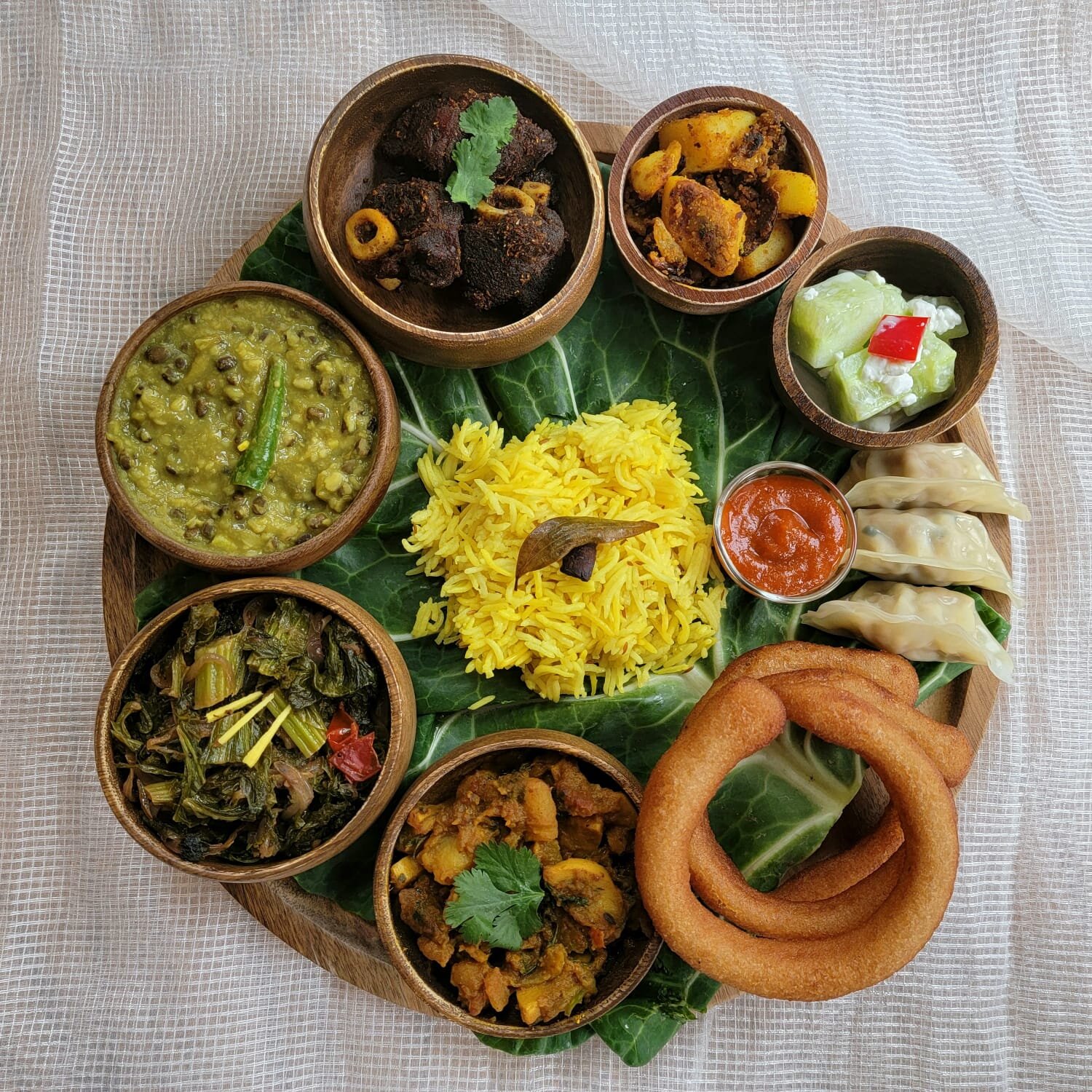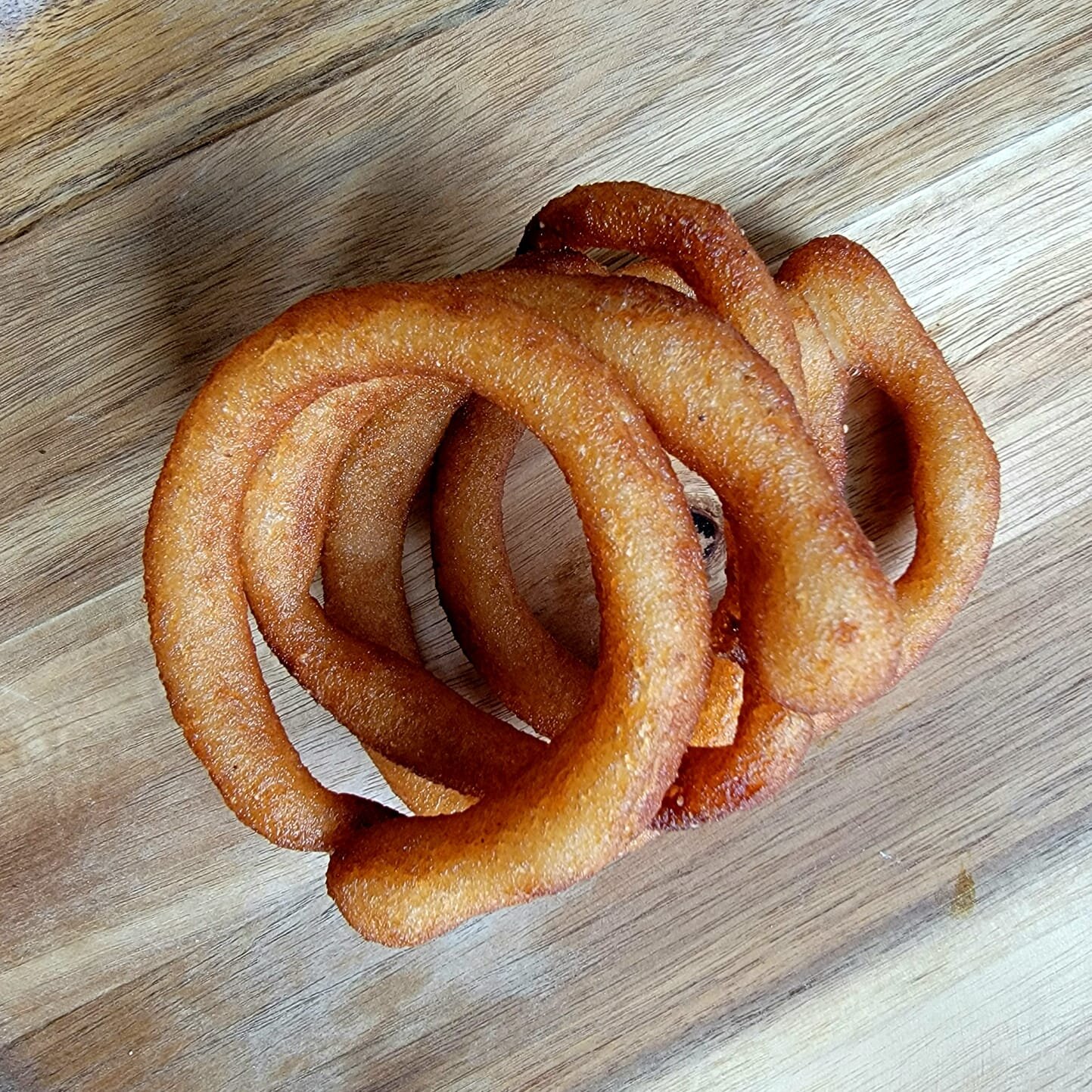Sikkim Thali
This weekend we were excited to prepare a thali from the North-Eastern Indian state of Sikkim. This is the 15th state thali we have cooked as part of our Weekend Thali Project. Bordering Tibet, Nepal and Bhutan, the cuisine has strong influences from these neighboring countries. Delicacies of Sikkimese cuisine include locally available ingredients like fermented soya bean (kinema), fermented leafy vegetables (gundruk), dalle chillies, yak butter, chhurpi cheese, fiddle-head fern (ningro) and so on. Needless to say, we were not able to get our hands on a lot of these ingredients in Seattle. Additionally, Sikkimese cuisine has a number of dishes made with pork and beef which we do not eat. But while we were slightly limited in what dishes we could choose for the Sikkim Thali, we found that similar to other Indian states, there is enough depth in the cuisine to suit any palate or dietary preference. So folks - we present to you our version of the Sikkim Thali. We thoroughly enjoyed cooking and devouring this meal. We also got motivated to make a Nepalese Thali at some point and we chose to leave the famous thupka soup for then.
Momos (Link to recipe)
Momos are the lifeline of Sikkim. These steamed dumplings have a number of fillings ranging between pork, cheese, chicken or vegetables. We prepared vegetable momos and these were voted as the best dish of the meal by our daughter.
Khalo Dal (Link to recipe)
A unique lentil dish, this one is made out of split or whole black gram (I used a combination of both). A simple, wholesome, nutritious dish, this dal was flavored with mustard oil, ghee, turmeric, ginger, green chillies and salt.
Rayo ko saag (Link to recipe)
In this effortless dish, mustard greens were sauteed with ginger, red chillies, onions and tomatoes. We discovered that ginger is used predominantly in Sikkimese cuisine even more than garlic.
Til ko Aloo (Link to recipe)
This dish was an amazing discovery!! Potatoes cooked with freshly roasted and ground sesame powder! The addition of red chilli powder and green chillies further stimulated the taste buds. Simply brilliant!!
Bamboo shoot curry (Link to recipe)
Fresh bamboo shoots are a staple in Sikkim since they are grown in the state. In this dish, bamboo shoots and potatoes were cooked in an onion-tomato based curry. While we used canned bamboo shoots, we still liked the taste and texture of the dish even though we were eating it for the first time.
Cucumber Chhurpi Salad
As we researched about food from Sikkim, we came across this youtube series on Sikkimese cuisine that featured some amazing home-cooked dishes including this salad. Chhurpi is a cheese made out of cow milk or yak milk that is popular in Sikkim. This salad is made out of cucumber, cottage cheese (in lieu of Chhurpi cheese), red peppers and salt. If you have time and want to explore more about Sikkimese cuisine, we highly recommend the youtube series above.
Sel Roti (Link to recipe)
This bread has it’s origins in Nepal but is very popular in Sikkim as well. Made out of rice, sugar and ghee, this deep-fried dish is eaten for breakfast or as an accompaniment for lunch. Our daughter took one bite out of this bread and exclaimed “I love this crispy doughnut”, so I would say that this dish was a definite success in our home!
Chambray (Link to recipe)
This is a really simple rice pulao from Sikkim. Lightly spiced with cinnamon, bay leaves and cumin seeds, this rice dish is eaten with the Til ko Aloo and Mutton Pakku.
Mutton Pakku (Link to recipe)
This slow-cooked goat curry is cooked with only dry masalas as a means to preserve the meat. With roots in Nepalese cuisine, this dish is also eaten in Sikkim. Meat was marinated overnight in freshly ground cumin powder, coriander powder and garam masala and then cooked for over two hours on a low flame. This is definitely a labor of love!!
We will end by saying that this thali was a pleasant surprise to us. We thoroughly enjoyed researching about the cuisine, learning about the state and exploring the culinary depth of the food. We were also glad that we could prepare so many dishes from the state even when we didn’t have access to a lot of the ingredients. Personally, what has intrigued me the most is learning about the Dalle Khursani chilli that is close to the Habanero chilli on the Scoville scale (the scale to measure the spiciness of chillies). Hope to one day experience the flavor and heat of this chilli in person - maybe in the scenic valleys of Gangtok. But until then, we will need to be content with savoring the flavors of this Sikkim thali at home.









